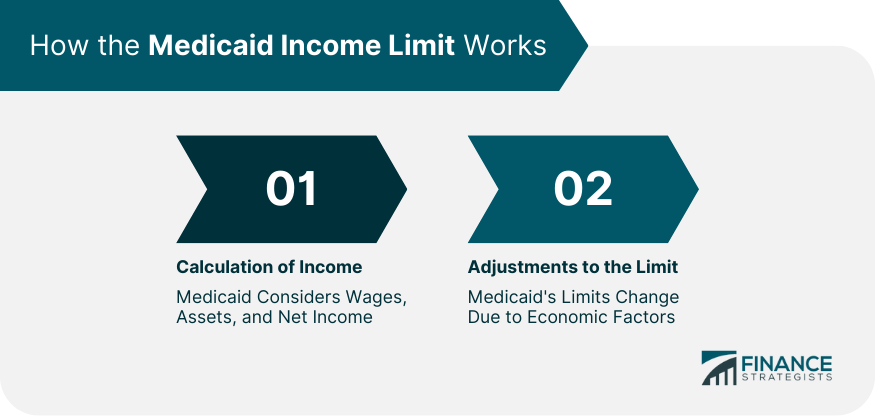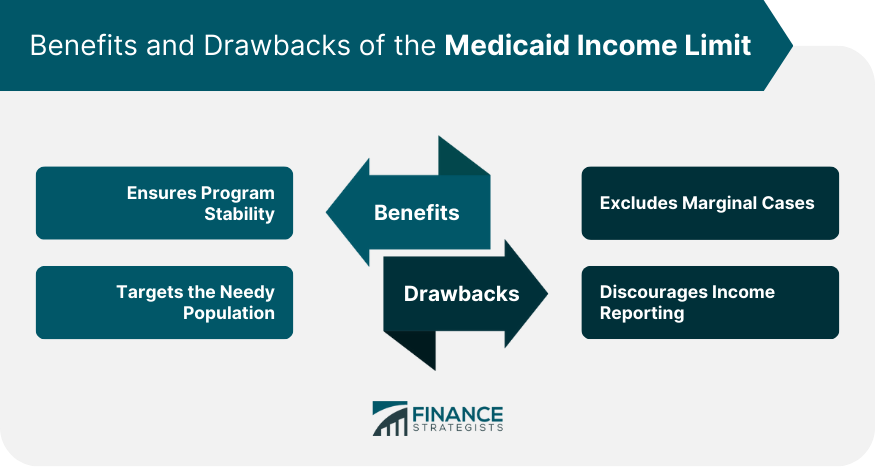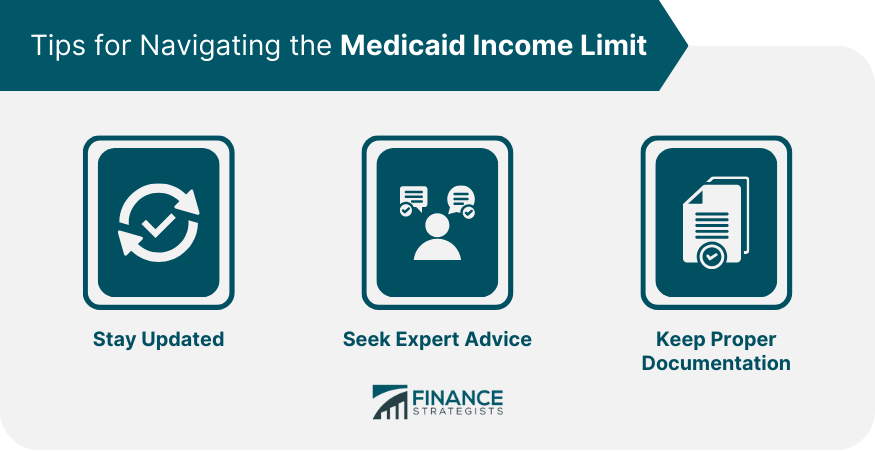The Medicaid income limit serves as a financial boundary, delineating the maximum earnings an individual or a family can have to be eligible for Medicaid assistance. In essence, it's like a gatekeeper, determining who can enter the realm of Medicaid benefits. These boundaries fluctuate, varying not just from one state to another, but sometimes differing within the Medicaid programs in the same state. Medicaid aims to cater primarily to the low-income segment of the population, providing them with essential medical assistance. Instituting an income limit ensures that this program remains exclusive to its intended beneficiaries. By setting up this financial threshold, Medicaid ensures it doesn't spread itself too thin, so to speak. It's like a sieve, filtering out those who might have other means to shoulder their medical expenses. This way, those truly in dire straits, financially speaking, get the lion's share of the assistance. Deciphering one's income for Medicaid purposes isn't a mere tally of earnings. Medicaid delves deeper, scouring through various income sources, whether they are regular wages, sporadic earnings, or even certain types of assets that could be liquidated for funds. While gross income offers a preliminary overview, the program often digs deeper into the net income, ensuring that the picture of an individual's financial standing is both complete and accurate. Like the ever-changing tides, Medicaid income limits are in a state of flux. They don't stay stagnant but evolve, adapting to economic changes and legislative decisions. Consider them as a living entity, sensitive to factors like inflation or the shifts in median household incomes. It's not uncommon to see these limits nudged upwards every year, a nod to the ever-increasing cost of living, making sure the program remains an accessible haven for its target audience. In a world of limited resources, the Medicaid income limit acts as a safeguard, ensuring the program's endurance. By establishing a clear-cut financial boundary, Medicaid ensures its reservoir of funds and resources aren't drained but are judiciously used for those who need them most. It's a vital cog in the mechanism, ensuring that the Medicaid machine runs smoothly, catering to millions year after year. With no income constraints in place, there's a risk that Medicaid might be swamped with applicants, including those who can afford healthcare outside the system. The income limit, in this context, is like a compass, making sure Medicaid's focus remains directed towards its true north - the underserved and underprivileged. Every system, no matter how well-intentioned, has its pitfalls. For Medicaid, one glaring issue is the inadvertent exclusion of those hovering just above the income threshold. Picture individuals or families who, by a slight margin, exceed the limit. They might grapple with almost similar financial challenges as those below the limit but find the doors of Medicaid closed for them. One tricky offshoot of setting an income boundary is the temptation for some to obscure their true earnings. When individuals, teetering near the income limit, feel they might be shut out, there might be a tendency to underreport or omit certain income sources. While this might grant them short-term access, it undermines the system's foundational integrity and can have serious repercussions. In the shifting sands of Medicaid's financial landscape, knowledge is power. Regular checks and updates on any changes to the income limit can shed light on one's eligibility status. This proactive approach ensures individuals are always in the know, and never caught off guard by unexpected shifts. Medicaid, with its myriad rules and ever-evolving guidelines, can sometimes resemble a maze. In such scenarios, leaning on the expertise of professionals can act as a beacon, illuminating the path. Expert advice can demystify complex aspects, offering clarity and guidance. Medicaid's income determination hinges heavily on documentation. It's akin to building a case, where every piece of paper, every document, strengthens one's eligibility claim. By meticulously maintaining records, from earnings to assets, individuals can facilitate a smoother, more transparent evaluation process. The Medicaid income limit plays a pivotal role in the U.S. healthcare system, acting as both a filter and a protector. It serves as a financial boundary, safeguarding the program's sustainability by allocating resources judiciously to those who need them most. This clear-cut limit ensures that Medicaid remains exclusive to its intended beneficiaries, preventing the program from being overwhelmed by applicants who can afford healthcare elsewhere. However, there are drawbacks, such as the inadvertent exclusion of those just above the income threshold and the temptation for some to obscure their true earnings, which can undermine the program's integrity. Navigating the Medicaid income limit requires staying updated on changes, seeking expert advice to demystify complexities, and maintaining proper documentation. Despite its challenges, with awareness, guidance, and meticulous record-keeping, individuals can navigate this crucial aspect of the U.S. healthcare framework effectively.What Is the Medicaid Income Limit?
How the Medicaid Income Limit Works
Calculation of Income
Adjustments to the Limit

Benefits of the Medicaid Income Limit
Ensuring Program Sustainability
Targeting the Needy Population
Drawbacks of the Medicaid Income Limit
Excluding Marginal Cases
Discouraging Income Reporting

Tips for Navigating the Medicaid Income Limit
Staying Updated
Seeking Expert Advice
Keeping Proper Documentation

Conclusion
Medicaid Income Limit FAQs
The Medicaid income limit is the maximum earnings a person or family can have to qualify for Medicaid assistance.
Medicaid considers various income sources, including wages, assets, and net income, for a comprehensive financial assessment.
Medicaid income limits change to adapt to economic shifts and legislative decisions, addressing inflation and income changes.
The income limit ensures efficient resource allocation, promotes program sustainability, and focuses Medicaid on serving the underserved population.
To navigate the income limit successfully, individuals should stay updated on changes, seek expert advice, and maintain proper documentation of their finances.
True Tamplin is a published author, public speaker, CEO of UpDigital, and founder of Finance Strategists.
True is a Certified Educator in Personal Finance (CEPF®), author of The Handy Financial Ratios Guide, a member of the Society for Advancing Business Editing and Writing, contributes to his financial education site, Finance Strategists, and has spoken to various financial communities such as the CFA Institute, as well as university students like his Alma mater, Biola University, where he received a bachelor of science in business and data analytics.
To learn more about True, visit his personal website or view his author profiles on Amazon, Nasdaq and Forbes.















